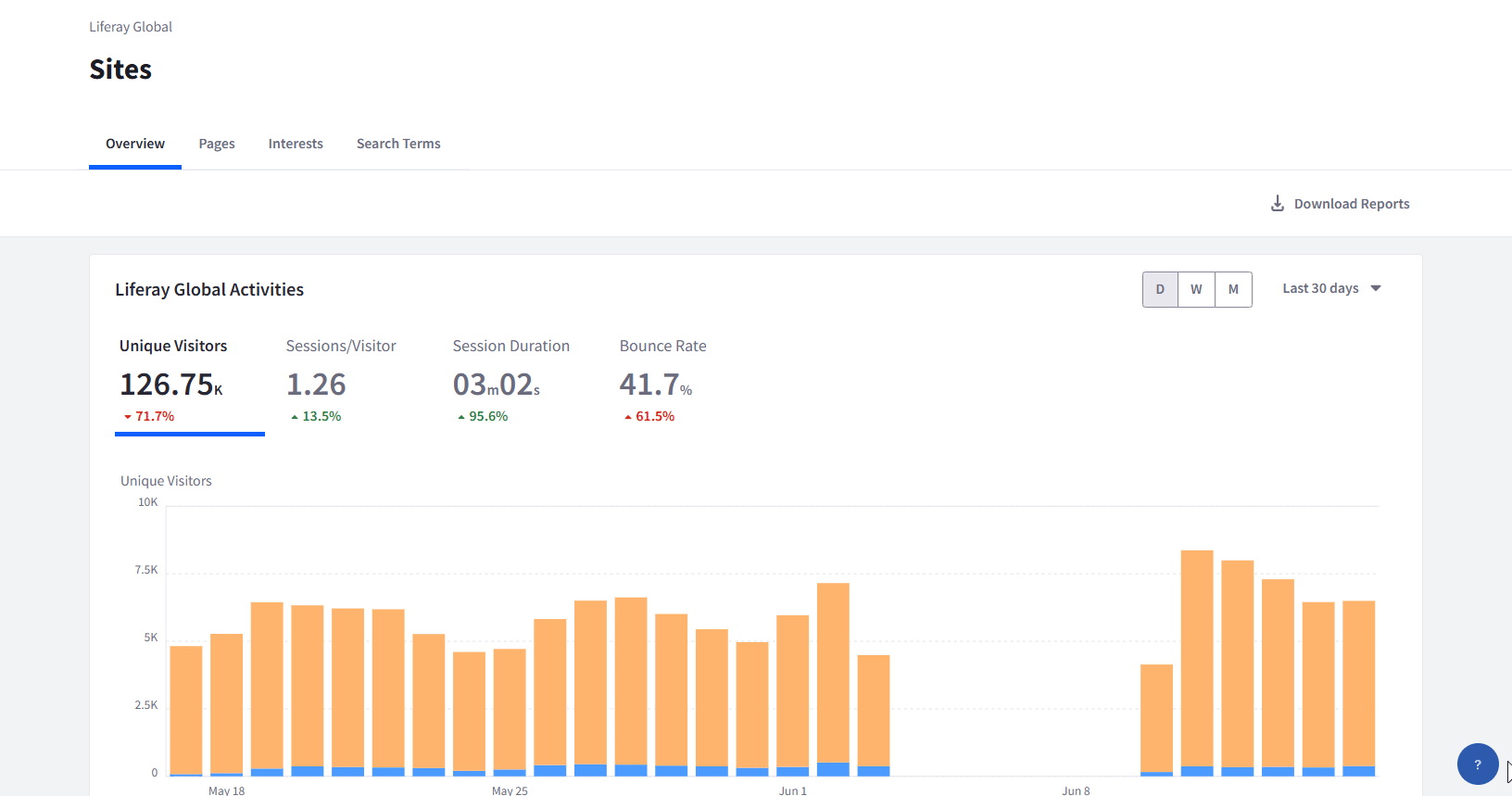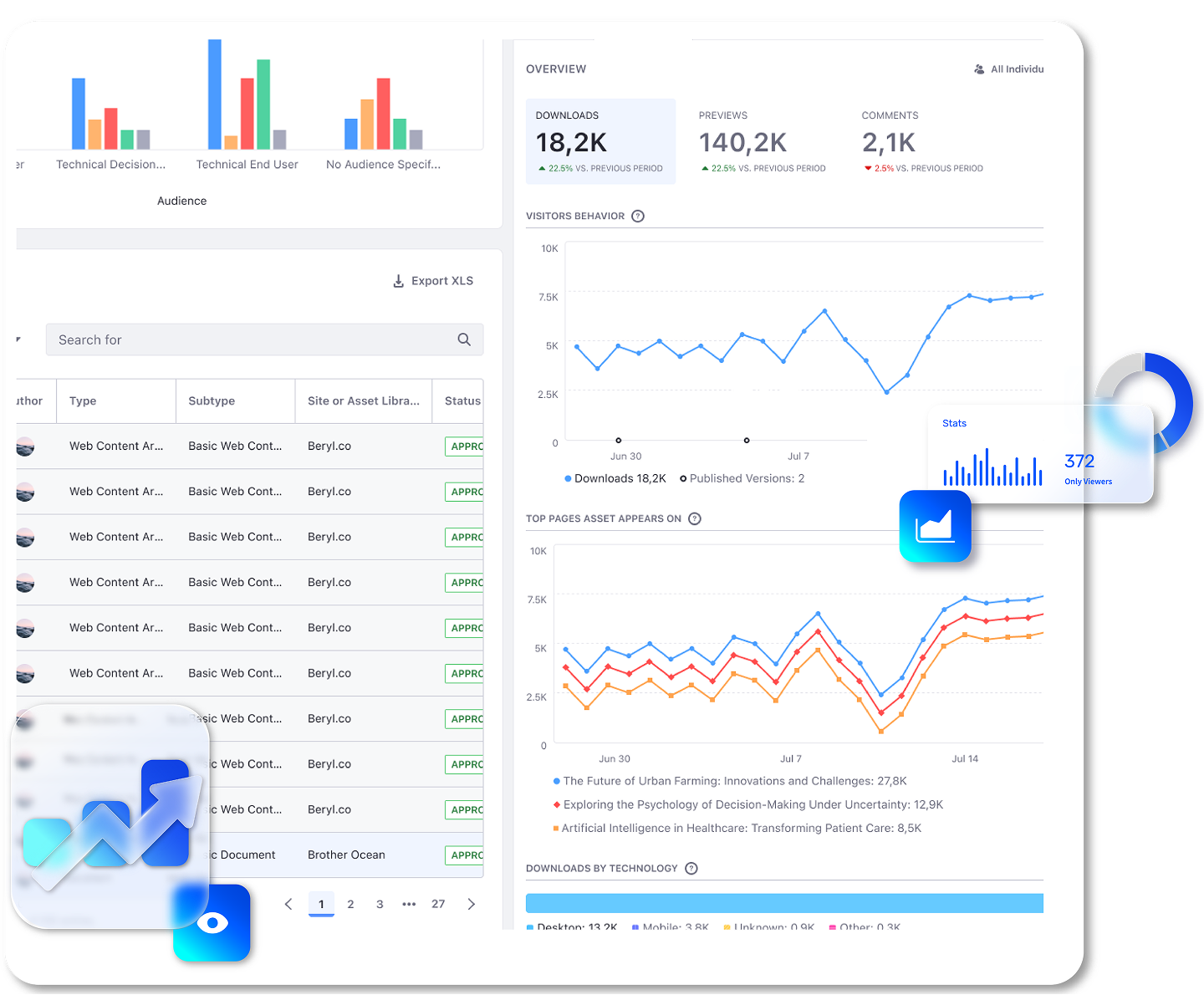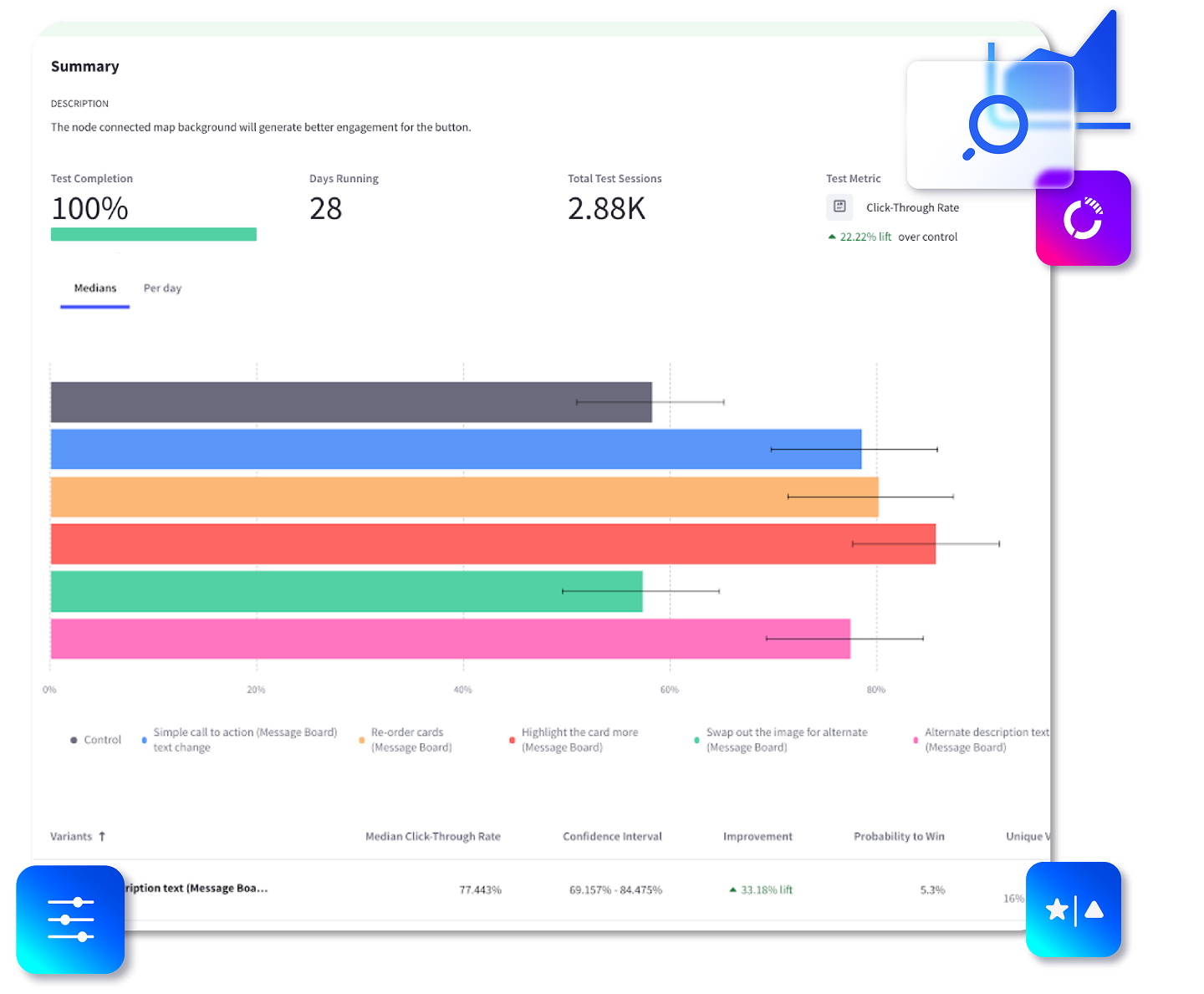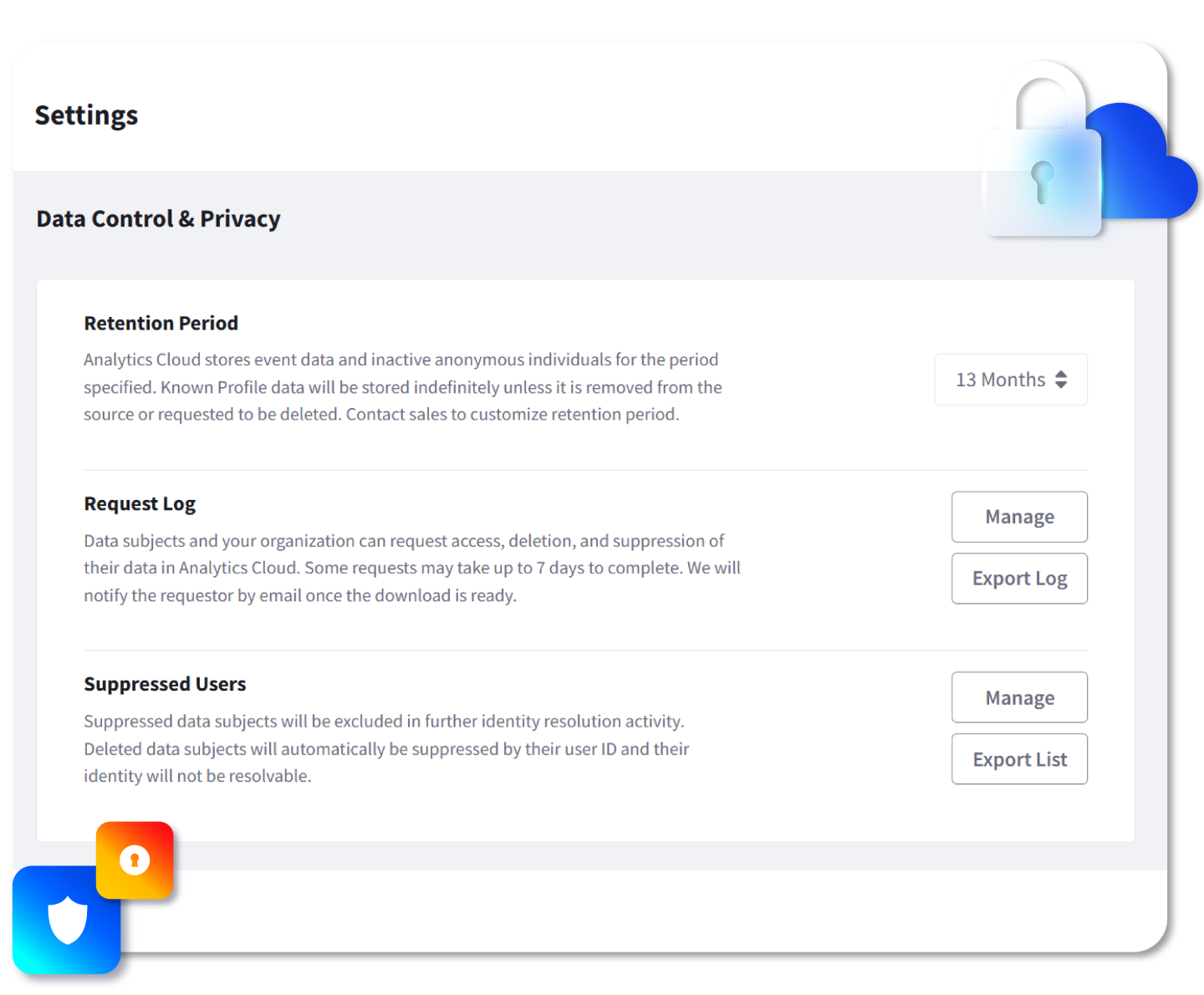
Track, Measure, and Optimize with Built-In Analytics
clear metrics and visual dashboards.

Understand Your Users
-
Customer Profile Analytics
Aggregate customer profile, behavior, and interaction data across sources and merge everything into a single view of the customer. Anonymous users can also be tracked. -
Cohort Analysis
Access a cohort analysis based on visitors from a specific acquisition date and whether they return to your site over a given time period. You can also identify the retention rate for specific cohorts. -
Search Terms and Interests
See the most common search terms and topics visitors are interested in, making it possible for you to identify potential content gaps and create content visitors want.

Measure Your Performance
-
Site-Wide Analytics
Analyze how visitors interact with your site using key information like the number of unique visitors, the average number of sessions per visitor, session duration, and bounce rate. -
Path Analytics
Understand how users arrive on a page and where they go next to make informed decisions on how to keep users engaged. -
Asset Performance
Dig deep into the performance of assets like blog posts, web content, and documents and media. Metrics such as total views and download rate can help determine the effectiveness of an asset. Assets are tracked within the Content Dashboard to show both visual representations and lists of what is available and where it’s being used. -
Contextual Content Analytics
Help content creators understand the performance of their content from the page itself. In a streamlined dashboard, authors can uncover views, views by location, views by device, and understand where their asset is published across sites and channels. -
Custom Event Tracking
Help content creators understand the performance of their content from the page itself. In a streamlined dashboard, authors can uncover views, views by location, views by device, and understand where their asset is published across sites and channels.

Put Data into Action
-
A/B Testing
Evaluate performance by running A/B tests against bounce rate and clicks, then publish the winner as the new default. -
Segments
Create and manage segments by aggregating individuals based on common attributes and behavior. -
Personalization
Tailor pages and recommend relevant content and products to specific Segments. Learn more about Liferay DXP’s native personalization capabilities here.
Choose the Right Analytics Tier for You
To access these analytics capabilities, Liferay provides three tiers based on number of known, logged-in individuals, page views, and users. For more information, contact [email protected]
Basic
1,000 Named Individuals*
300,000 Page Views
Sign in your Liferay account for access
Included with DXP SH (7.4)/Liferay PaaS
Business
10,000 Named Individuals
5,000,000 Page Views
Unlimited users for Analytics Management
Enterprise
100,000 Named Individuals
60,000,000 Page Views
Unlimited users for Analytics Management
*Named Individuals is the number of known users, also called logged-in users.

Protect Your Data
-
Encryption Protocols
Liferay uses enforced SSL connections with minimum AES-256 encryption when customer data is transmitted. -
Data Hosting
Liferay encrypts data at the transmission and infrastructure level. -
Data Retention
By default, Liferay retains data for 13 months. This can, however, be changed according to your needs. -
Anonymous Data Handling
Interaction data is anonymized by design in Liferay. This data is only merged with an individual’s identity when the data reaches the cloud infrastructure, meaning no identity is exposed externally or transferred by any other means. -
Privacy Regulations
Interaction data is anonymized by design in Liferay. This data is only merged with an individual’s identity when the data reaches the cloud infrastructure, meaning no identity is exposed externally or transferred by any other means.
Make your digital experiences even more powerful with data.

Built on Liferay Digital Experience Platform
© 2025 Liferay Inc. All Rights Reserved.